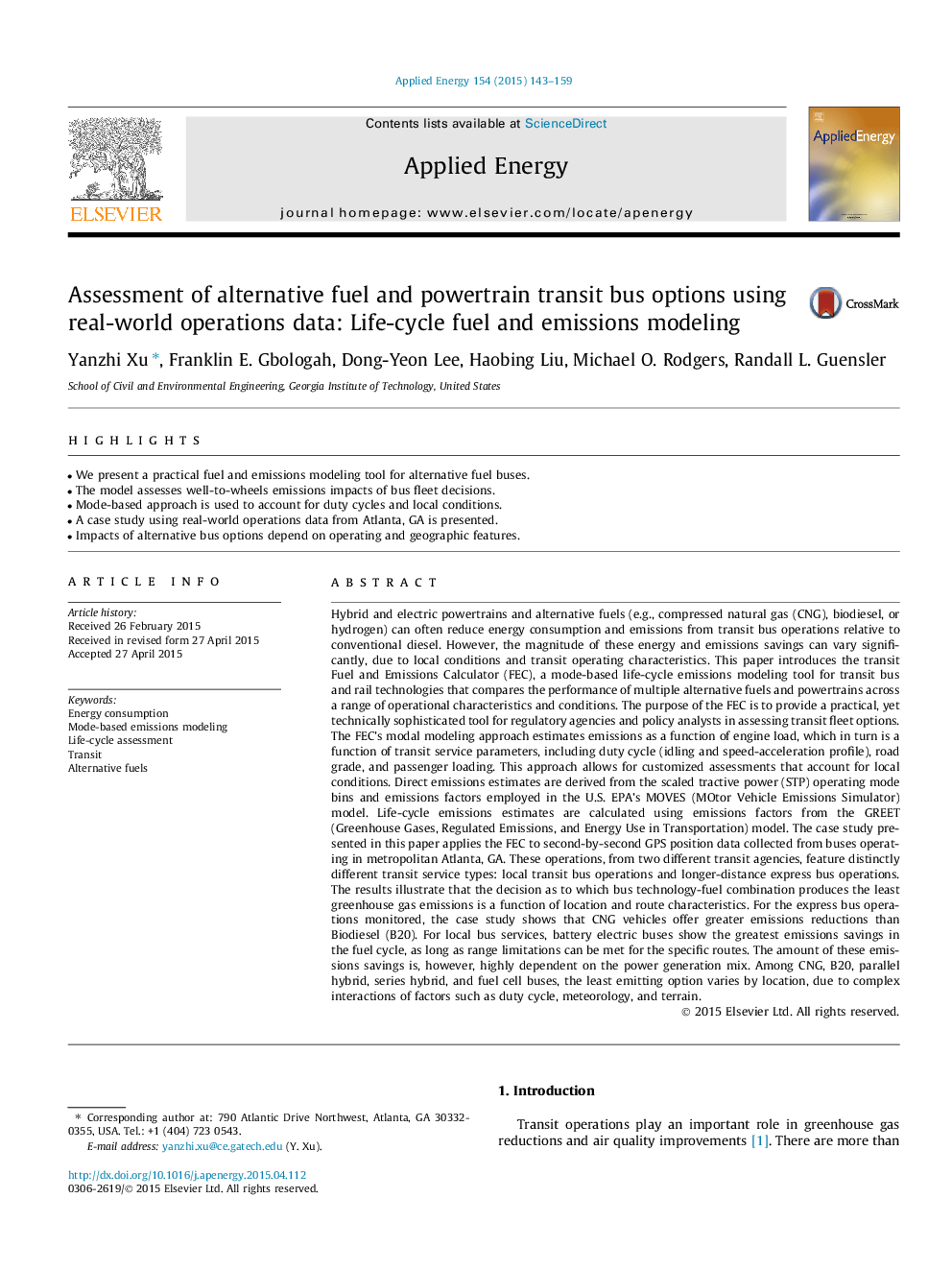| کد مقاله | کد نشریه | سال انتشار | مقاله انگلیسی | نسخه تمام متن |
|---|---|---|---|---|
| 6686831 | 501868 | 2015 | 17 صفحه PDF | دانلود رایگان |
عنوان انگلیسی مقاله ISI
Assessment of alternative fuel and powertrain transit bus options using real-world operations data: Life-cycle fuel and emissions modeling
ترجمه فارسی عنوان
ارزیابی گزینه های اتوبوس جایگزین سوخت و نیروی ترانزیشن با استفاده از داده های عملیات واقعی: مدل سازی سوخت و چرخه عمر چرخه
دانلود مقاله + سفارش ترجمه
دانلود مقاله ISI انگلیسی
رایگان برای ایرانیان
کلمات کلیدی
مصرف انرژی، مدلسازی بر اساس مدل مبتنی بر حالت، ارزیابی چرخه حیات، حمل و نقل، سوخت های جایگزین،
موضوعات مرتبط
مهندسی و علوم پایه
مهندسی انرژی
مهندسی انرژی و فناوری های برق
چکیده انگلیسی
Hybrid and electric powertrains and alternative fuels (e.g., compressed natural gas (CNG), biodiesel, or hydrogen) can often reduce energy consumption and emissions from transit bus operations relative to conventional diesel. However, the magnitude of these energy and emissions savings can vary significantly, due to local conditions and transit operating characteristics. This paper introduces the transit Fuel and Emissions Calculator (FEC), a mode-based life-cycle emissions modeling tool for transit bus and rail technologies that compares the performance of multiple alternative fuels and powertrains across a range of operational characteristics and conditions. The purpose of the FEC is to provide a practical, yet technically sophisticated tool for regulatory agencies and policy analysts in assessing transit fleet options. The FEC's modal modeling approach estimates emissions as a function of engine load, which in turn is a function of transit service parameters, including duty cycle (idling and speed-acceleration profile), road grade, and passenger loading. This approach allows for customized assessments that account for local conditions. Direct emissions estimates are derived from the scaled tractive power (STP) operating mode bins and emissions factors employed in the U.S. EPA's MOVES (MOtor Vehicle Emissions Simulator) model. Life-cycle emissions estimates are calculated using emissions factors from the GREET (Greenhouse Gases, Regulated Emissions, and Energy Use in Transportation) model. The case study presented in this paper applies the FEC to second-by-second GPS position data collected from buses operating in metropolitan Atlanta, GA. These operations, from two different transit agencies, feature distinctly different transit service types: local transit bus operations and longer-distance express bus operations. The results illustrate that the decision as to which bus technology-fuel combination produces the least greenhouse gas emissions is a function of location and route characteristics. For the express bus operations monitored, the case study shows that CNG vehicles offer greater emissions reductions than Biodiesel (B20). For local bus services, battery electric buses show the greatest emissions savings in the fuel cycle, as long as range limitations can be met for the specific routes. The amount of these emissions savings is, however, highly dependent on the power generation mix. Among CNG, B20, parallel hybrid, series hybrid, and fuel cell buses, the least emitting option varies by location, due to complex interactions of factors such as duty cycle, meteorology, and terrain.
ناشر
Database: Elsevier - ScienceDirect (ساینس دایرکت)
Journal: Applied Energy - Volume 154, 15 September 2015, Pages 143-159
Journal: Applied Energy - Volume 154, 15 September 2015, Pages 143-159
نویسندگان
Yanzhi Xu, Franklin E. Gbologah, Dong-Yeon Lee, Haobing Liu, Michael O. Rodgers, Randall L. Guensler,
